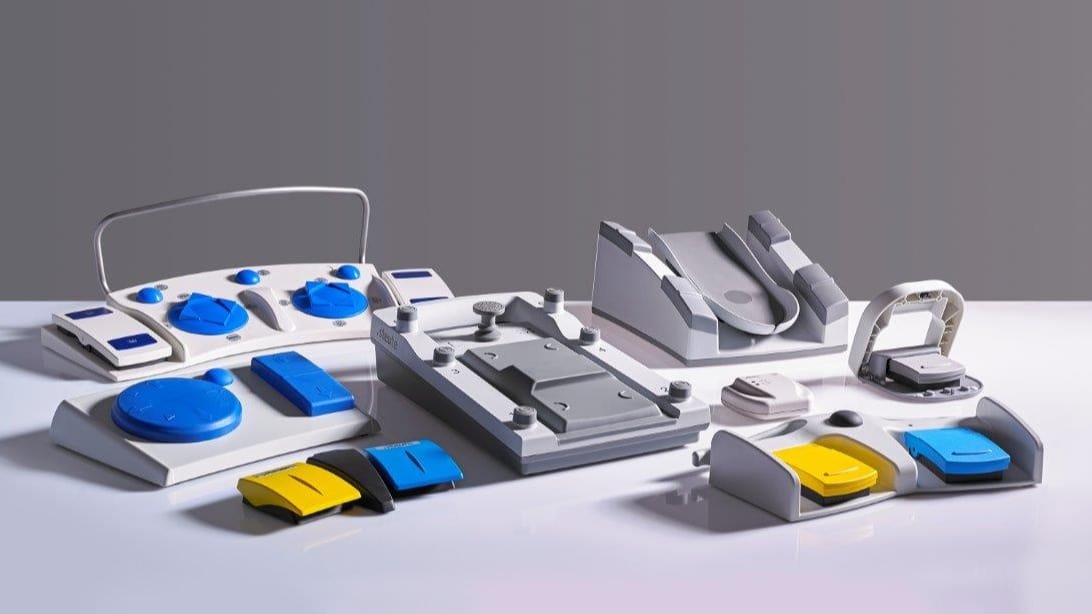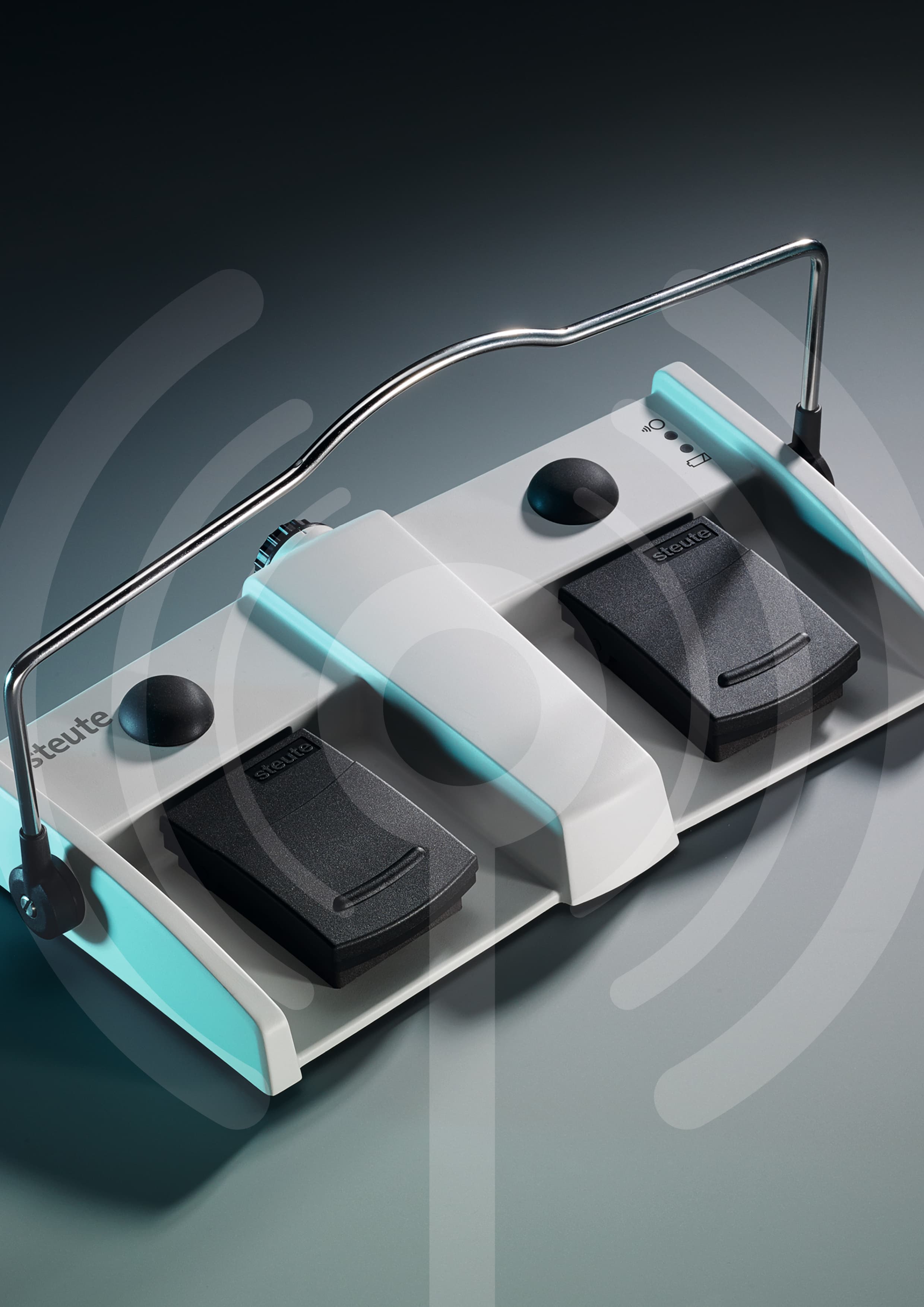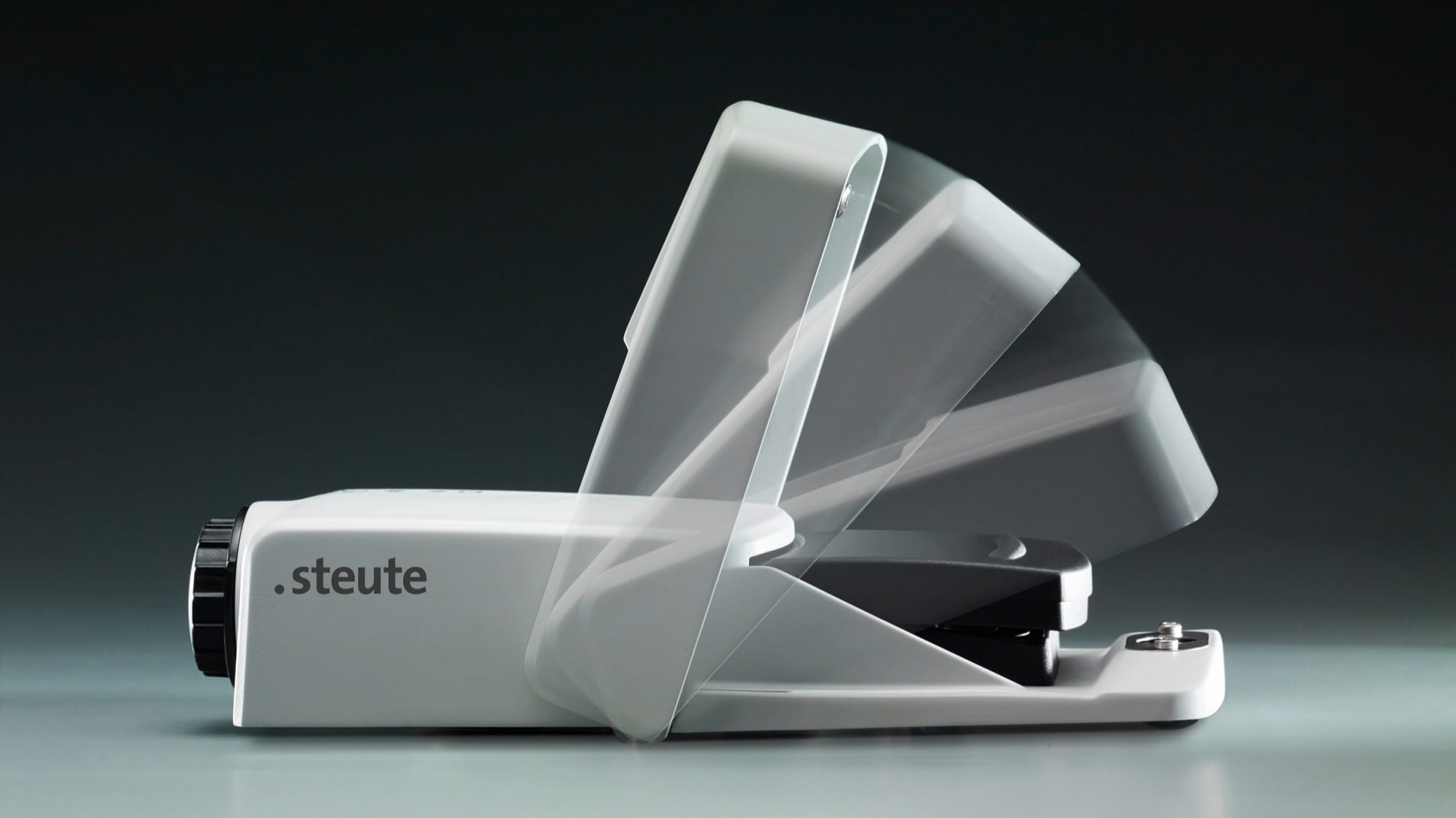Maximum efficiency, charging unnecessary. steute Meditec has launched a new series of wireless foot controls for universal use in medical equipment. The user interfaces in this series are so energy-efficient that they can be powered using conventional batteries.
steute Meditec has launched a new series of wireless foot controls for universal use in medical equipment. The user interfaces in this series are so energy-efficient that they can be powered using conventional batteries. At the same time, they achieve very high safety and availability levels.
This foot control series has variants with one to four pedals and takes its place alongside the existing steute range of user interfaces as its new standard series of wireless foot controls.
State-of-the-art wireless standard for medical equipment
Signals are transmitted to the medical device via the third and latest generation of steute wireless technology. This technology features considerably reduced power consumption in conjunction with higher (and configurable) transmission performance. Although power consumption is low, the response time is very fast: signal transmission from an already activated foot control takes just 20 milliseconds.
The low-energy wireless technology used by the new steute user interfaces means that, for the first time ever, conventional alkaline batteries (e.g. AA or C) can be used instead of a lithium ion rechargeable battery. Batteries therefore no longer need recharging, eliminating both the charging devices and the charging management, which in turn reduces the costs.
The latest steute Meditec wireless technology works on the 2.4 GHz frequency band and can be used throughout the world universally and free of charge.
Low energy – short connection times
One of the features of the new, third-generation SW2.4LE-MED wireless technology developed by steute is an extremely low energy consumption during active operation of just 11 mA. Thanks to a “sleep” mode, into which the wireless foot control falls when not used for a preconfigurable amount of time, the power consumption can be reduced to almost nothing. The shift back from the low-energy resting mode to the active mode is so fast that it goes unnoticed by the user: in practice the average wake-up time in real conditions is 50 to 60 milliseconds. The entire process chain takes place within this very short period: actuation of the foot control, “waking up” of the switch, transmission of the signal, arrival at the receiver unit, processing of the signal, and switching of the output signal.
Higher and more flexible transmission performance
While the power consumption of the wireless signal has been reduced, the transmission performance is actually higher than that of the previous wireless technology generation. In addition, transmission is now flexibly configurable, meaning that, for example, a user interface controlling an X-ray device can send signals to that device from a neighbouring control room. Clear assignation of foot control to corresponding receiver via the »pairing« procedure reliably prevents erroneous signalling and also facilitates interference-free operation of several wireless user interfaces inside one room or OR.
Powered by commercially available, not rechargeable batteries
The low energy consumption means that power can now be supplied by commercially available and no longer by rechargeable batteries. This means: both the effort of recharging and the charging device itself can be eliminated. With a conventional medical application profile, the batteries last for more than one and a half years, meaning that device manufacturers can replace them as part of their annual service. The battery status is displayed at all times. Should end users wish to change the batteries themselves, this is possible in a few easy steps and with no need for tools. The waterproof battery compartment simply has to be opened with a quarter-turn of the knob. The protection class of the foot control (up to IP X8) remains unaffected.
Non-tiring and intuitive operation
In addition to optimising its power supply and achieving a high level of transmission reliability and a long lifetime, the steute engineers attached great importance to the ergonomic design of this new foot control series, i.e. non-tiring and intuitive operation. Optional push buttons can be located above the pedals and are also actuated by foot. A folding bar enables the wireless foot controls to be positioned easily, while their wireless actuation gives users additional freedom of movement without the restrictions of a (potentially unhygienic) cable.
International standards implemented
An extremely low residual error probability permits documentation of the transmission safety as below 1 x 10-9 1/h. The wireless system hereby meets the requirements of SIL 3 (Safety Integrity Level to IEC 61508). A further advantage is its improved 128 bit-AES encryption, which also satisfies the security requirements of the FDA.



